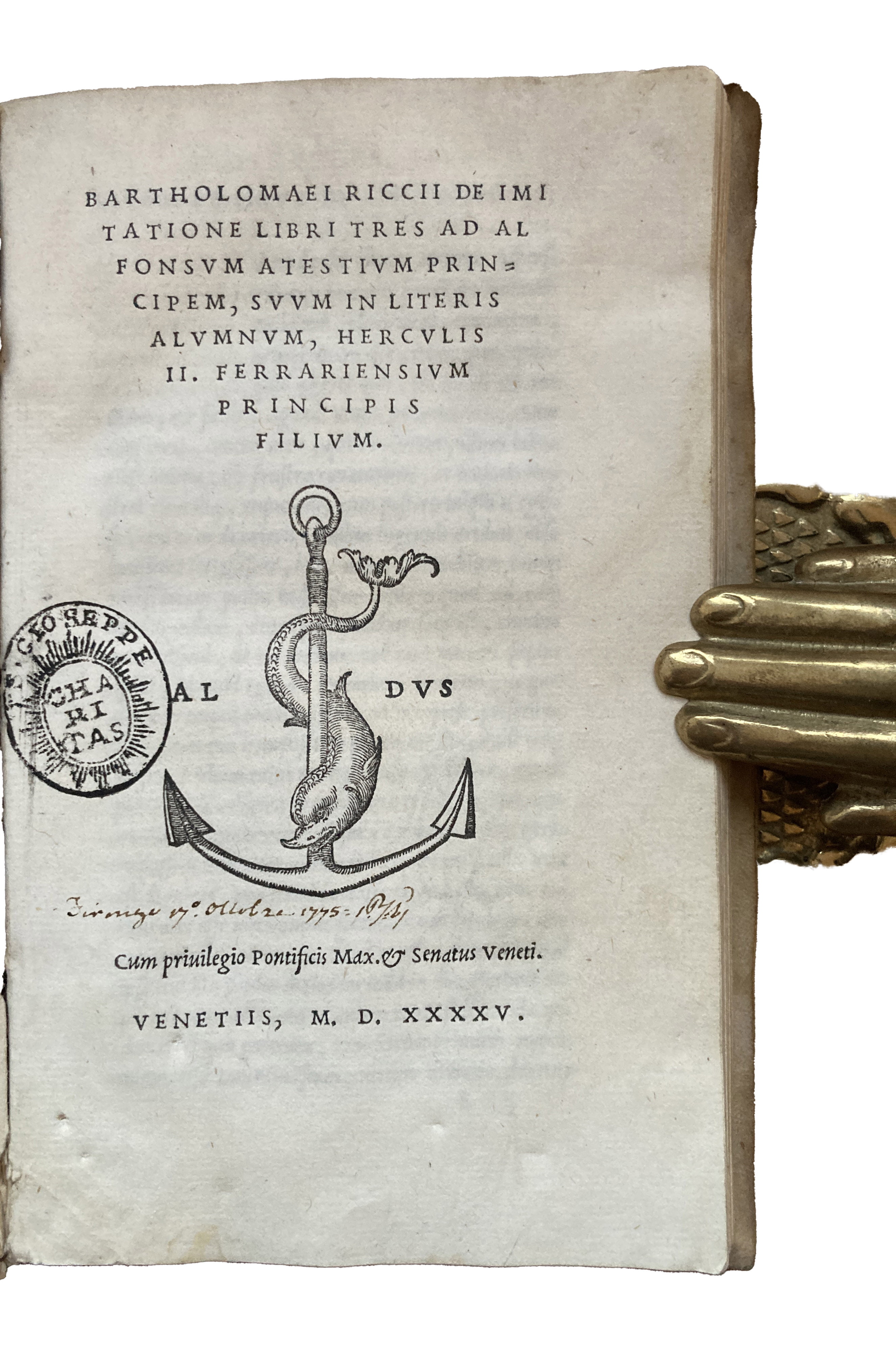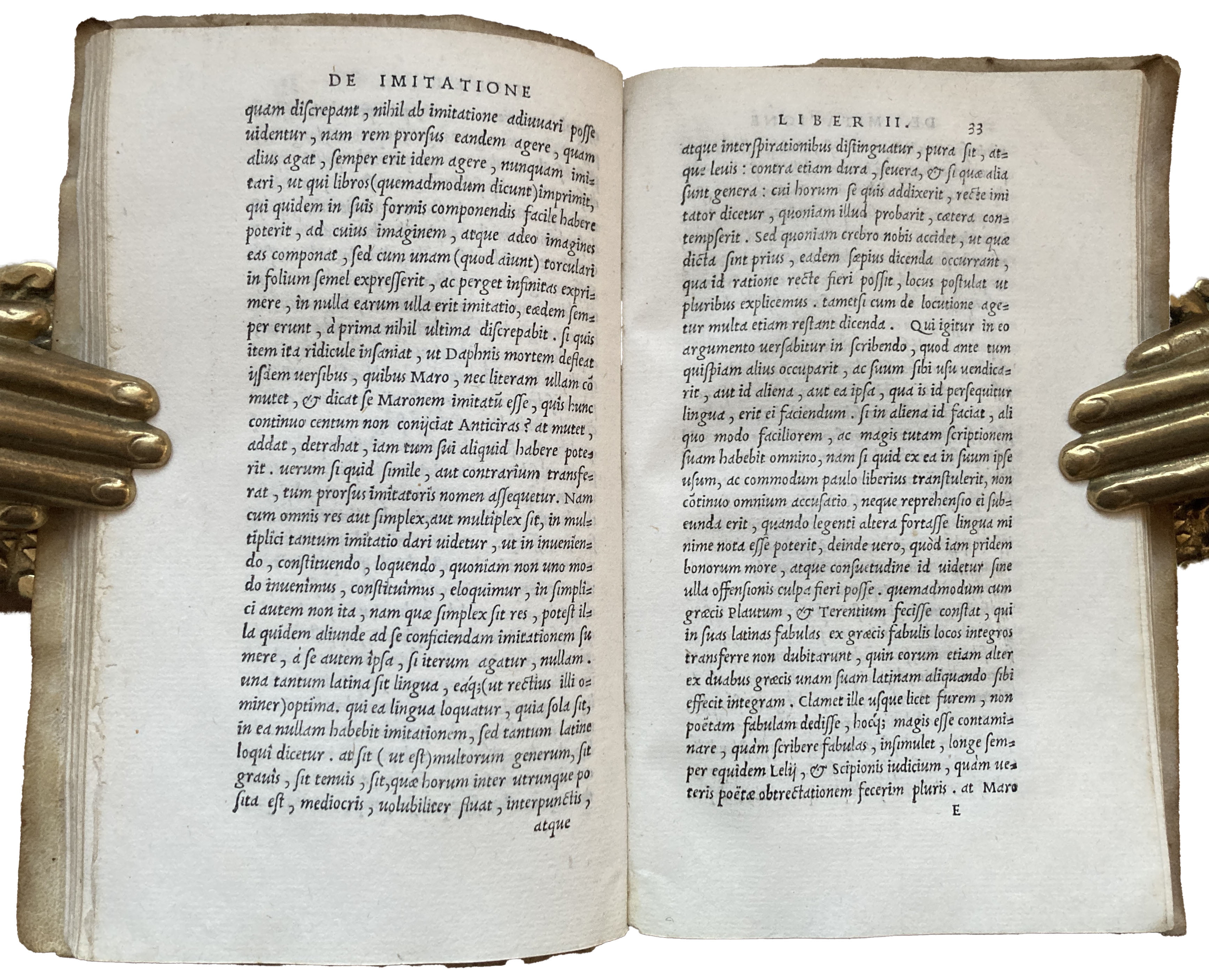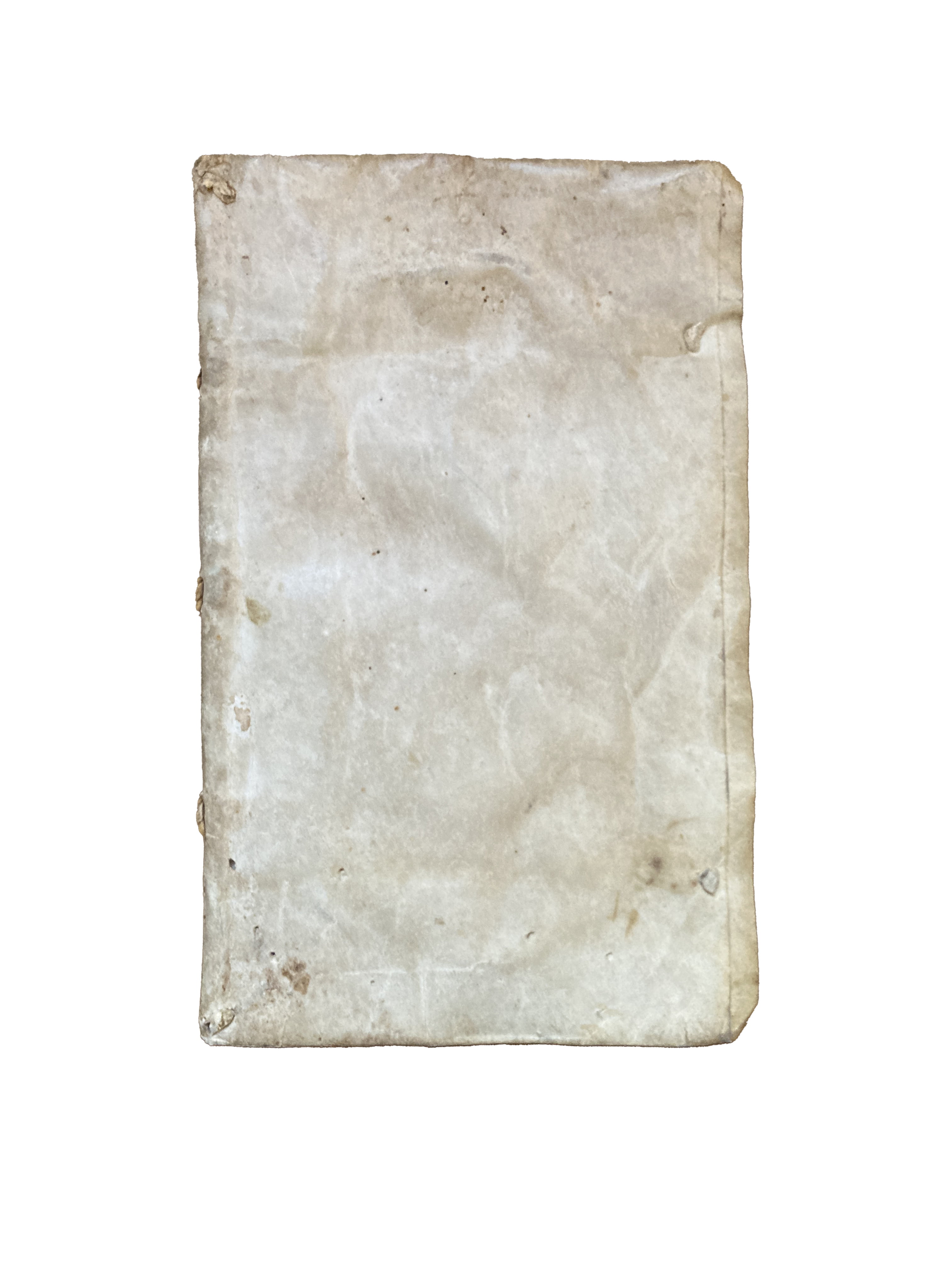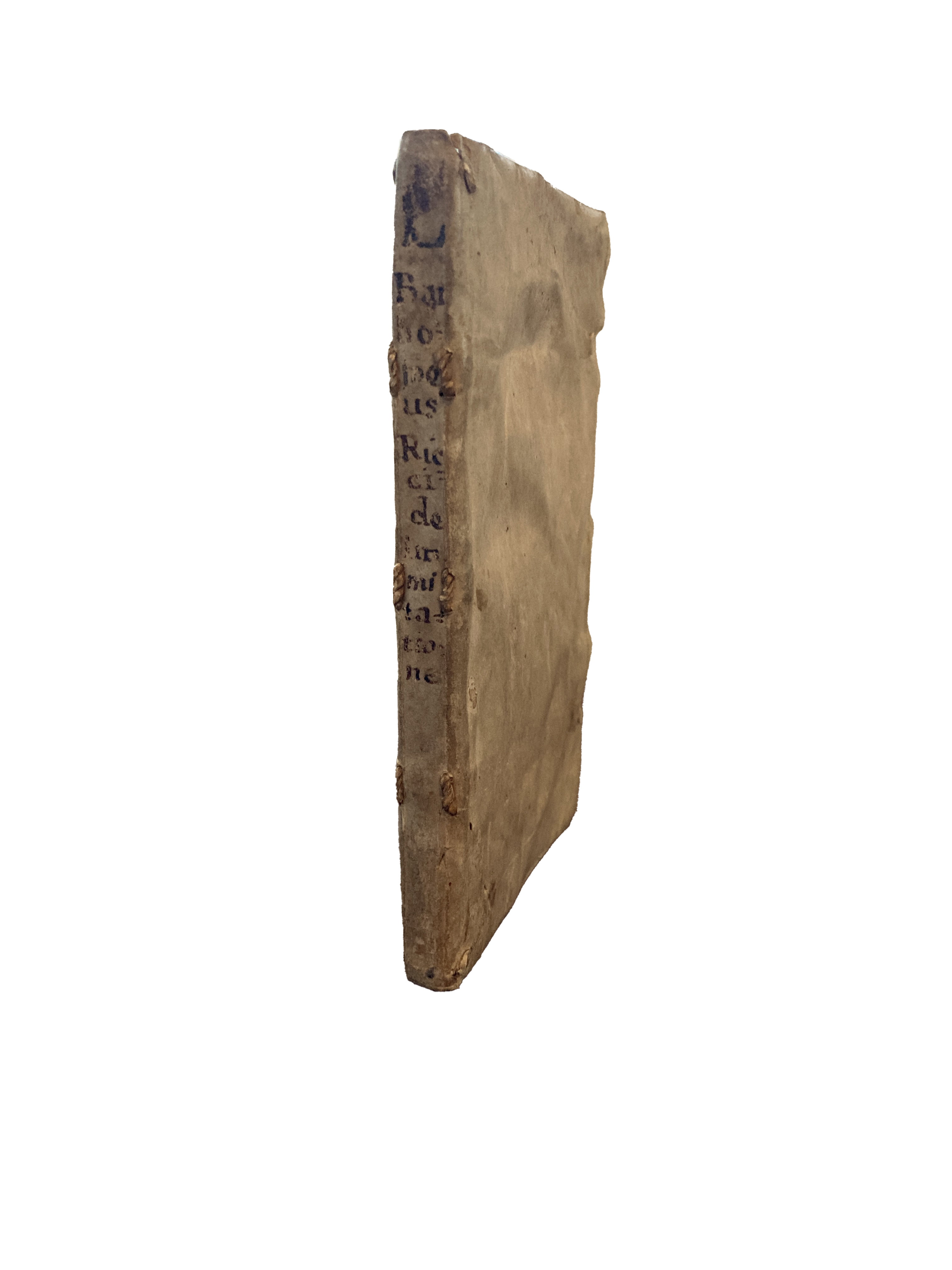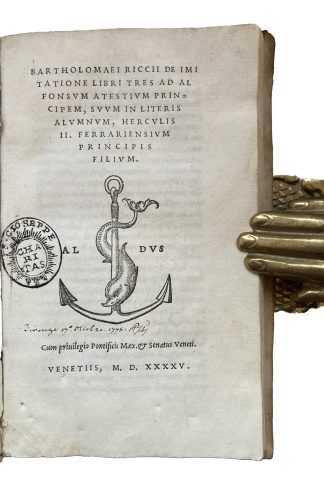RICCI, Bartolomeo.
De imitatione libri tres
Venice, Aldo Manuzio, 1545£2,250.00
FIRST EDITION (?) 8vo, ff. 87 (misnumbered 88) (i). Elegant italic letter, printer’s device to t-p and verso of last. Tiny hole to lower inner blank corner of t-p and following three ll. Upper cover and four initial ll. pierced through causing a tiny hole in the blank inner corner, very slight age yellowing.
A very good copy, crisp, clean and well margined in contemporary limp vellum, small ink smudge to lower cover, traces of ties. Stubs from a C15 ms. liturgy. C18 circular ink stamp “S. Gioseppe Charitas” and ms. “Firenze 17° Ottobre 1775” to t-p.
Fascinating treatise on literary imitation by Ricci. Renuard (122:3) refers to an edition of 1541, but no copy can be traced. USTC, Worldcat and EDIT 16 record no copies in libraries worldwide. Most probably a ghost. Bartolomeo Ricci (1490-1569) was a prominent Italian humanist, teacher to Luigi Cornaro, later cardinal, in Venice, and to young Alfonso and Luigi d’Este in Ferrara. A passionate Ciceronian and a prolific writer of comedies, he is most famous for his works in Latin, particularly for a Latin dictionary and a treatise on elocution which read with great interest and praised by Erasmus and Bembo.
In the Renaissance, ‘imitatio’, i.e. the imitation and study of exemplary models (usually the Latin classics), was a fundamental part of the literary composition process – a creative principle – as well as a teaching method aimed at developing the students’ writing skills. Ricci dedicates his ‘De imitatione’ (here) to one of his noble students, Alfonso II d’Este (1533-1597), son of Ercole II duke of Ferrara. According to the author, imitation consists “in supplementing nature with art, in correcting one’s genius by adding to it the experience of a variety of other authors” (Weinberg). Remarkably, Ricci is the first Renaissance writer to distinguish different types of ‘imitatio’ – ‘following’, ‘imitating’ and ‘emulating’ – possibly drawing from ideas previously expressed by Erasmus and Bembo on the subject – however these terms are not always used by the author consistently. ‘De imitatione’ indicates the best authors to be taken as models for prose and poetry (e.g. a tragic poet should imitate Seneca’s grave sentences), but also shows how emulation was used by ancient writers (e.g. by Catullus). Interestingly, towards the end of the third book, Ricci describes his method of teaching Latin to young students: after presenting the rudiments of grammar, he would introduce the authors from the easiest to the most difficult.
USTC 852408; EDIT16 CNCE 26957; Adams R490; BM STC It. p. 554; Brunet IV, p. 1277; Graesse VI, p. 109; Renouard 131:6. B. Weinberg, A History of Literary Criticism in the Italian Renaissance, Vol I (1963).In stock


